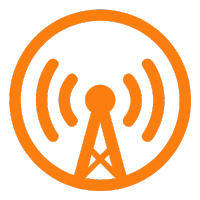Ep 072 – 5 Signs Your Coaching Business Is On The Right Track (Even Though It Feels Hard)
Or click below to listen on your favorite podcast player
I just got back from a quick kiteboarding trip with my wife in Turks and Caicos. It was beautiful—clear, shallow water, steady wind—just perfect conditions.
If you’ve never heard of kiteboarding, it’s basically wakeboarding while being pulled by a giant kite you’re controlling in the air.
This trip, I set a goal: I wanted to learn how to jump.
In kiteboarding, jumping is kind of a big deal. When you watch someone do it well, it looks effortless and smooth.
But when I tried it for the first time? It felt anything but effortless.
The first few attempts were rough. I mistimed the kite. I wiped out. Sometimes I’d just lift an inch off the water before coming crashing down. I was sore, bruised, and honestly, wondering if I was too old for this kind of thing.
But I had great instruction. I kept at it. Failing—yes—but failing better each time. Eventually, something clicked. I sent the kite to noon (which is straight overhead), leaned way back, pulled in the bar… and boom—I was in the air. Smooth. In control. Almost like I was floating.
And suddenly, something that had felt impossible just days earlier… felt easy. Fun, even.
It hit me in that moment: this is exactly what it’s like to build your coaching business.
What feels hard now won’t always feel hard. But you do have to go through the messy middle. The doubt. The awkward tries. The frustrating “why isn’t this working?” moments. You’ve got to keep showing up, keep adjusting, and keep going.
Because eventually? It clicks. And that thing you thought you’d never figure out? It starts to feel natural.
Let’s walk through 5 signs your coaching business is actually on the right track—even if it doesn’t feel like it right now.
⸻
1. It Feels Really Hard (Yes, This Is a Good Sign)
You might think that discomfort or doubt means something’s wrong—but it’s usually a sign you’re growing.
If content creation, consult calls, or even just showing up online feels awkward—it doesn’t mean you’re off track. It means you’re in the messy middle. The place where you’ve committed to putting yourself out there, but the results haven’t fully caught up yet.
It’s a rite of passage.
Just like learning to jump in kiteboarding, when I was carving hard and sending the kite higher, I felt totally out of control. I had thoughts like, “Is there even any chance of this working out?” But those feelings weren’t signs to stop—they were signs that I was on the edge of something new.
Same goes for your coaching biz.
If you’re second-guessing your offer, overthinking your content, or wondering if anyone even wants what you’re offering—it doesn’t mean you’re not cut out for this. It means you’re stepping into something new.
And that is exactly where transformation happens.
⸻
2. You’re Starting to Notice What Feels Hard (And That’s Clarity)
This might not feel like progress—but it is.
When you start noticing why things feel hard—when you begin to see what’s working and what’s not—you’re building awareness. And awareness leads to better decisions.
When I was learning to jump, it took me a while to realize I was carving too late, or that the kite was overhead too soon. Once I saw that, I could make adjustments. That clarity was the turning point.
In your business, maybe you’re starting to see that your offer needs more specificity. Or that your messaging isn’t as consistent as it could be.
That’s not failure. That’s progress.
One client I worked with had a lead magnet that wasn’t converting well. We realized it was too vague. Once we renamed it to clearly mention the exact problem she helps with, her ad costs dropped and her email engagement went way up.
That’s what happens when clarity kicks in.
⸻
3. You’re Taking Action (Even Imperfectly)
If you’re showing up—even inconsistently—you’re doing better than you think.
Every post you write, every consult you run, every email you send—it’s all part of the learning curve. You don’t have to be perfect. You just have to keep moving.
I know this from personal experience. I’d helped other coaches launch podcasts for years. But when I finally launched my own? That first episode took me an entire week. I overthought, re-recorded, scrapped it, and started again.
Now? I can produce an entire episode, write the show notes, and repurpose the content in under three hours. It still takes work—but it’s not hard anymore. That’s what ease looks like. That’s what reps create.
So if you’re out there taking imperfect action? You’re doing great.
⸻
4. You’ve Sought Support (That Means You’re Serious)
If you’ve invested in a coach, joined a program, or found a supportive community—it means you’re in it for real.
Support shortens the learning curve. It gives you perspective you can’t get alone. And it helps you take the next small step forward.
When I was learning to jump, I didn’t just try to figure it out on YouTube. I broke it down with guidance: time the kite, lean back, pull in the bar, work on the landing. Step by step.
Same goes for business.
Let’s say creating a lead magnet feels overwhelming. Don’t try to do it all at once. Start with a list of 30 ways you help people. Pick one. Build an outline. That’s your next step.
Clarity comes from action. And action becomes easier with support.
⸻
5. You’re Building Structure & Repeating Key Actions
Repetition builds results. Period.
You don’t get better at kiteboarding—or coaching—by doing random things once. You get better by building structure and repeating the right actions over and over.
Here’s the structure I teach my clients to follow:
✅ Define your offers (ideally 3 of them)
✅ Build a lead magnet
✅ Nurture your audience with emails
✅ Create weekly content
✅ Make consistent offers
✅ Send steady traffic to your funnel
When you focus on this structure and repeat it, momentum builds. You stop starting over. You start building on purpose.
⸻
Final Thoughts
If your business feels shaky or uncertain right now, it doesn’t mean you’re doing it wrong.
It means you’re building something real.
Keep showing up.
Keep doing the reps.
And don’t be afraid to get support.
Ease doesn’t come first. It comes after the messy middle—after the structure, the persistence, and the practice.
You’re not behind. You’re on your way.




You must be logged in to post a comment.